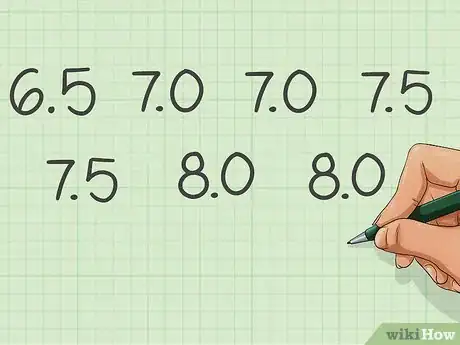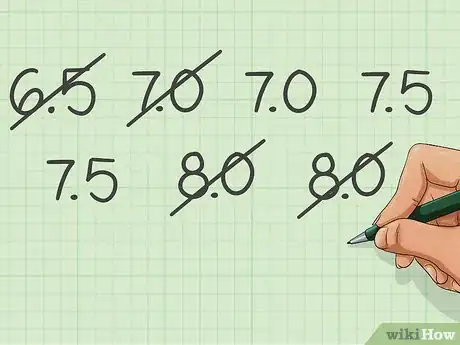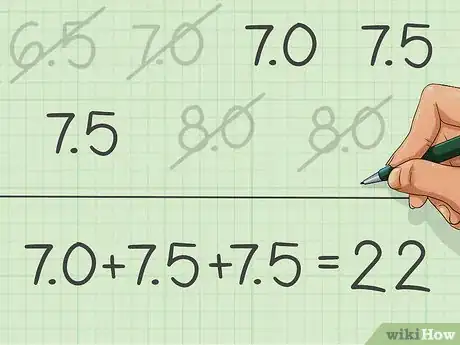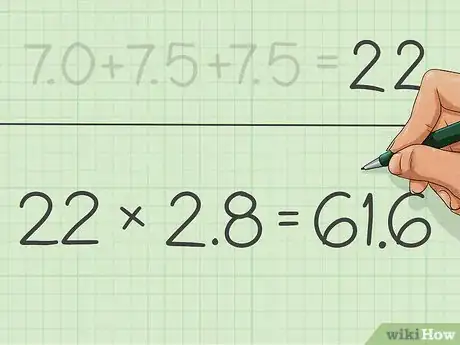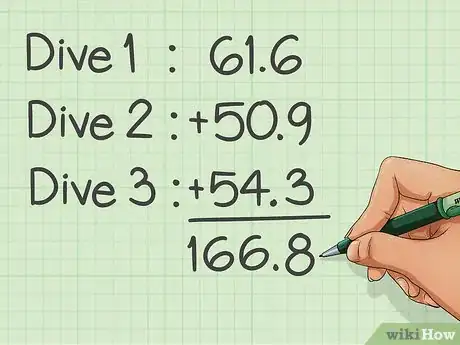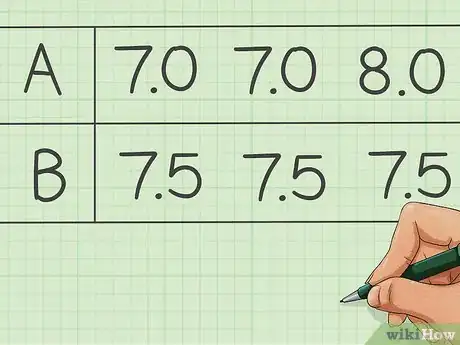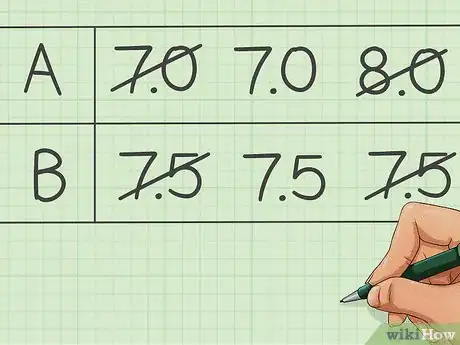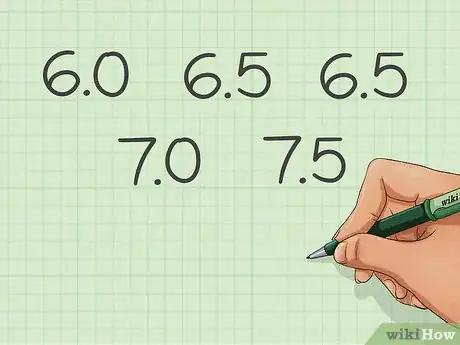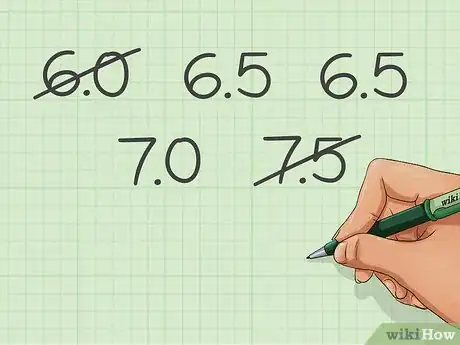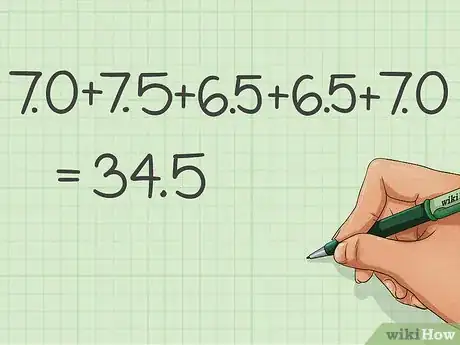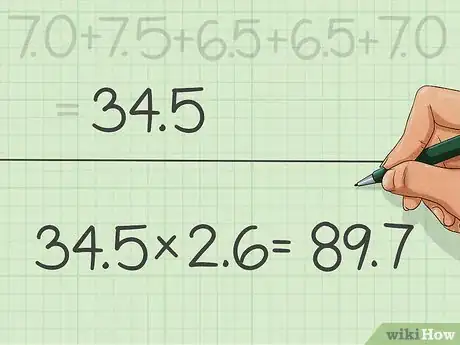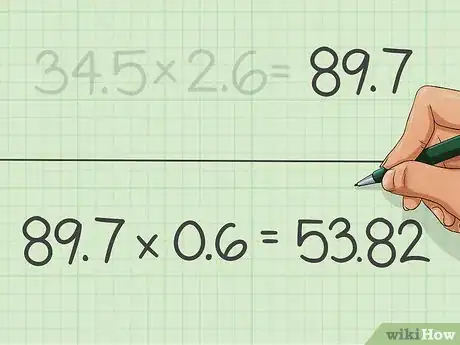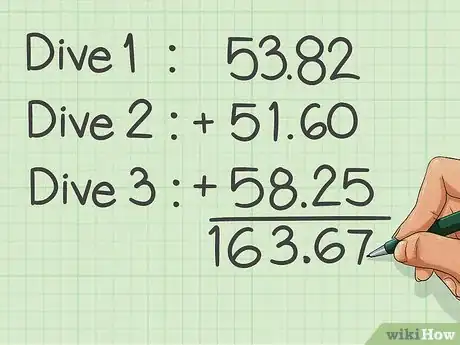X
This article was co-authored by wikiHow Staff. Our trained team of editors and researchers validate articles for accuracy and comprehensiveness. wikiHow's Content Management Team carefully monitors the work from our editorial staff to ensure that each article is backed by trusted research and meets our high quality standards.
This article has been viewed 75,385 times.
Learn more...
Have you ever watched the Olympics and wondered how they come up with the scores for the diving competition? It takes several steps to get from the judge ratings to the final scores, and the announcers are rarely eager to explain it. Pick up your calculator and a pad of paper, and you can calculate it yourself.
Steps
Method 1
Method 1 of 2:
Individual and Team Events
-
1Write down the execution scores. Each judge rates the dive from 0 ("completely failed") to 10 ("excellent"), using half-point increments. This is based on how well the diver performs, from his starting position to entry into the water. The judges do not take difficulty into account for this score.
- Example: a diver receives execution scores of 6.5, 7.0, 7.0, 7.5, 7.5, 8.0, and 8.0.
-
2Cross out the outliers. This step depends on how many judges there are:
- Seven judges: Cross out the two highest and the two lowest scores.
- Five judges: Cross out the highest and lowest scores.
- Three judges: Use all three scores.
- Example: There were seven judges, so cross out two scores on each end:
6.5,7.0, 7.0, 7.5, 7.5,8.0, and8.0.
Advertisement -
3Add the rest together. Find the sum of the remaining scores.
- Example: 7.0 + 7.5 + 7.5 = 22.0
-
4Multiply by the degree of difficulty (DD). Each attempted dive has a degree of difficulty calculated in advance. This is based on many factors, such as the number of twists and somersaults and the take-off and entry positions. Multiply your last sum by the degree of difficulty to get the final score for this dive.
- Example: Let's say the diver attempted an inward 2½ somersault dive in the 10 meter competition, in the pike position. This has a difficulty score of 2.8. Multiply this by the execution score to get the final score: 22.0 x 2.8 = 61.6.
-
5Add final scores as the event continues. Calculate each dive's final score using the same system. To determine an athlete's score for the whole event, add the final score for each dive.
- Example: If a diver dives three times with scores of 61.6, 50.9, and 54.3, the diver's score for the event is 61.6+50.9+54.3=166.8.
Advertisement
Method 2
Method 2 of 2:
Synchronized Events
-
1Write down the execution scores. In synchronized diving events, a separate panel of judges scores each diver's execution. These scores are based on the diver's form during take-off, dive, and entry. This score is not (yet) adjusted for difficulty of the dive or how well the two divers synchronized.
- Depending on the event, there may be three scores for each diver, or two.
- Example: Diver A receives execution scores of 7.0, 7.0, and 8.0. Diver B receives 7.5, 7.5, and 7.5.
-
2Discard the outliers. In order to reduce the effect of bias or unusual decisions, some of the highest and lowest scores are discarded. This depends on how many judges are at the event:
- 11 judges (3 execution scores per diver): Cross out Diver A's highest and lowest score. Cross out Diver B's highest and lowest score.
- 9 judges (2 execution scores per diver): Cross out the highest score and lowest score of the four, no matter which diver(s) they belong to.
- Example: Since there are three scores each, cross out the highest and lowest scores for each diver:
7.0, 7.0,8.0and7.5, 7.5,7.5.
-
3Note the synchronization scores. An additional five judges each award a score for synchronization, or how well the divers coordinate during take-off, dive, and entry.
- Example: the same divers received synchronization scores of 6.0, 6.5, 6.5, 7.0, and 7.5.
-
4Discard the highest and lowest synchronization scores. Unlike the execution scores, this system is used for both 11-judge and 9-judge events.
- Example: Ignore the lowest and highest results:
6.0, 6.5, 6.5, 7.0,7.5
- Example: Ignore the lowest and highest results:
-
5Add all remaining scores together. Add together both divers' execution scores, as well as the synchronized scores. Ignore all crossed-out results.
- Example: Remaining scores are 7.0 (Diver A execution), 7.5 (Diver B execution), 6.5, 6.5, and 7.0 (synchronization). Add them together: 7+7.5+6.5+6.5+7=34.5.
-
6Multiply by the degree of difficulty (DD). Each attempted dive has a difficulty rating assigned in advance according to specific rules. Even if the divers did not manage to complete the dive perfectly, their score is multiplied by this degree of difficulty.
- Example: Let's say the attempted dive had a 2.6 degree of difficulty. Multiply your last result by this number: 34.5 x 2.6 = 89.7.
-
7Multiply by 0.6. To get the final score, multiply your answer by 0.6 (or 3/5).[1] This makes up for the fact that synchronized divers receive 5 judge scores (after discarding outliers), while individual divers only receive 3. After this adjustment, scores from both types of events fall in the same range.
- Example: Multiply 89.7 * 0.6 to get 53.82, the final score for that dive.
-
8Add the scores for each attempt by the same pair of divers. Calculate the score for each attempt using the same process. As the event continues, add the scores for each dive from the same pair.
Advertisement
Community Q&A
-
QuestionHow do I score with only two judges?
 DonaganTop AnswererAdd their scores together and divide by 2.
DonaganTop AnswererAdd their scores together and divide by 2. -
QuestionHow is standard deviation used in scoring?
 Community AnswerThe z-score is 0.67 (to two decimal places), but you need to work out the percentage (or number) of students that scored higher and lower.To do this, you will need to refer to the standard normal distribution table.
Community AnswerThe z-score is 0.67 (to two decimal places), but you need to work out the percentage (or number) of students that scored higher and lower.To do this, you will need to refer to the standard normal distribution table.
Advertisement
References
About This Article
Advertisement
